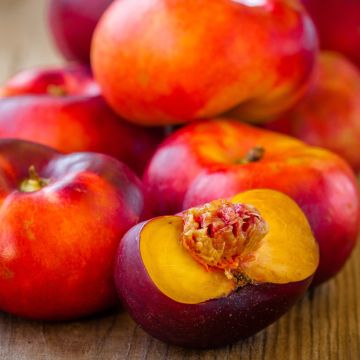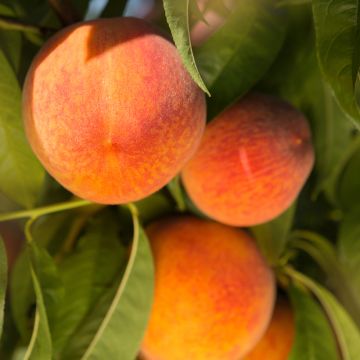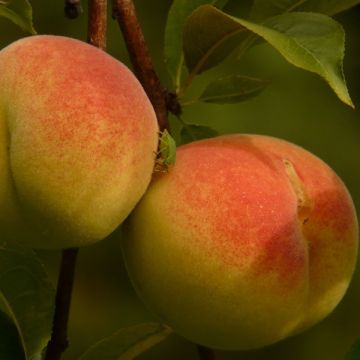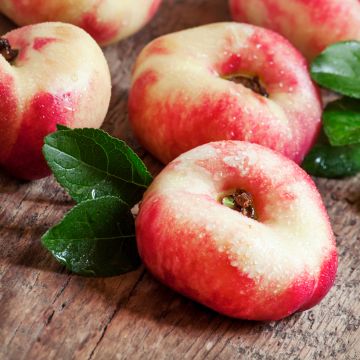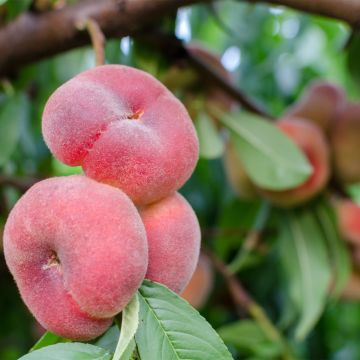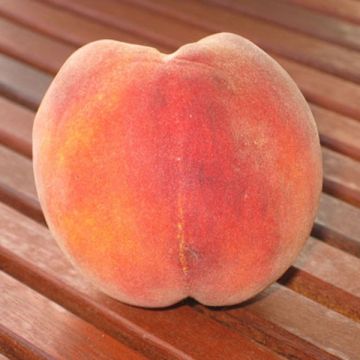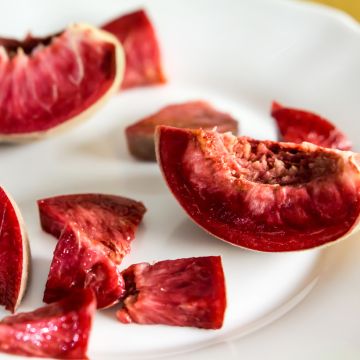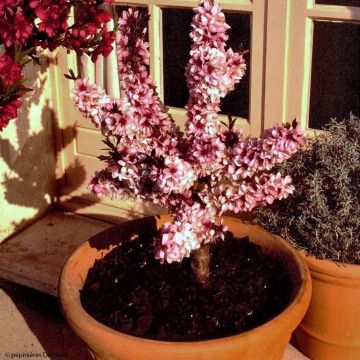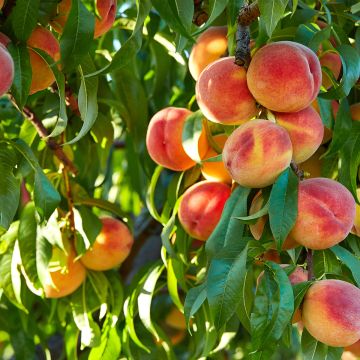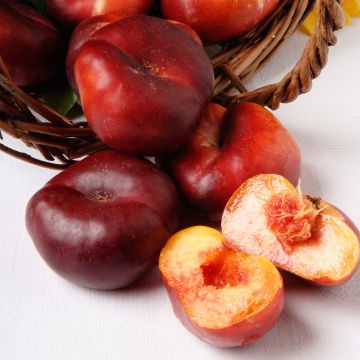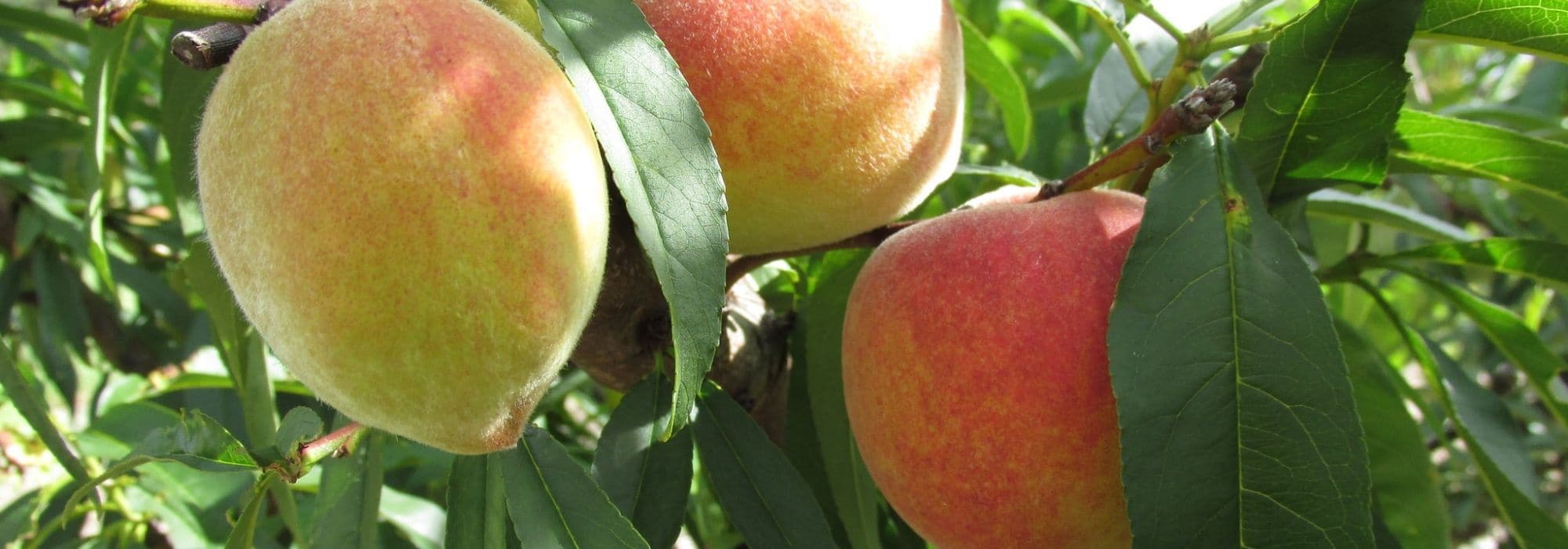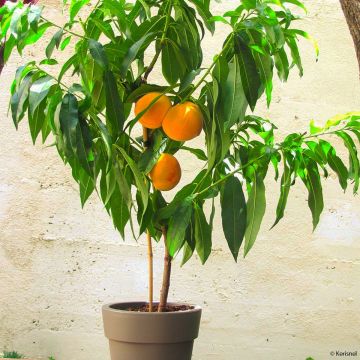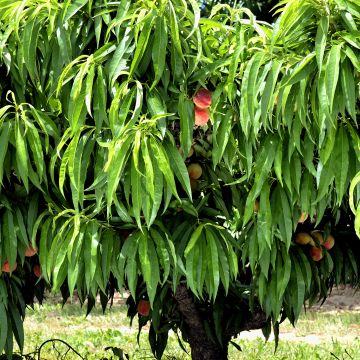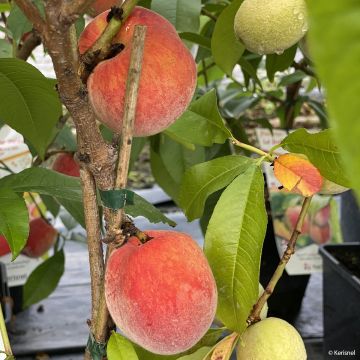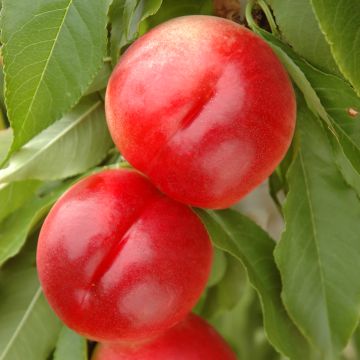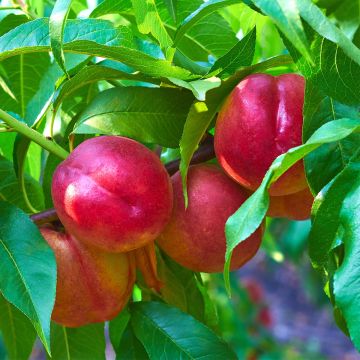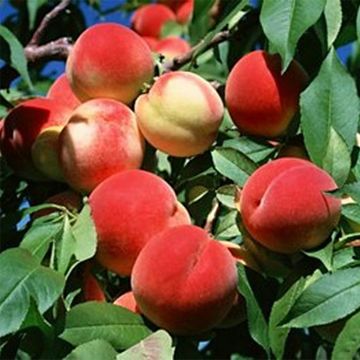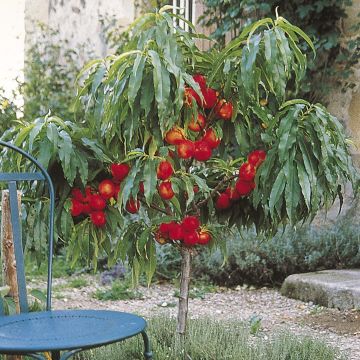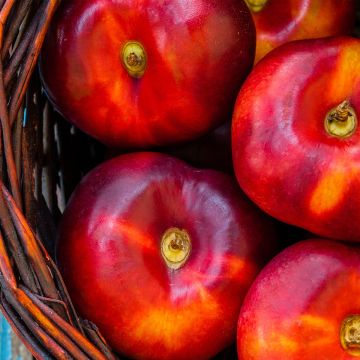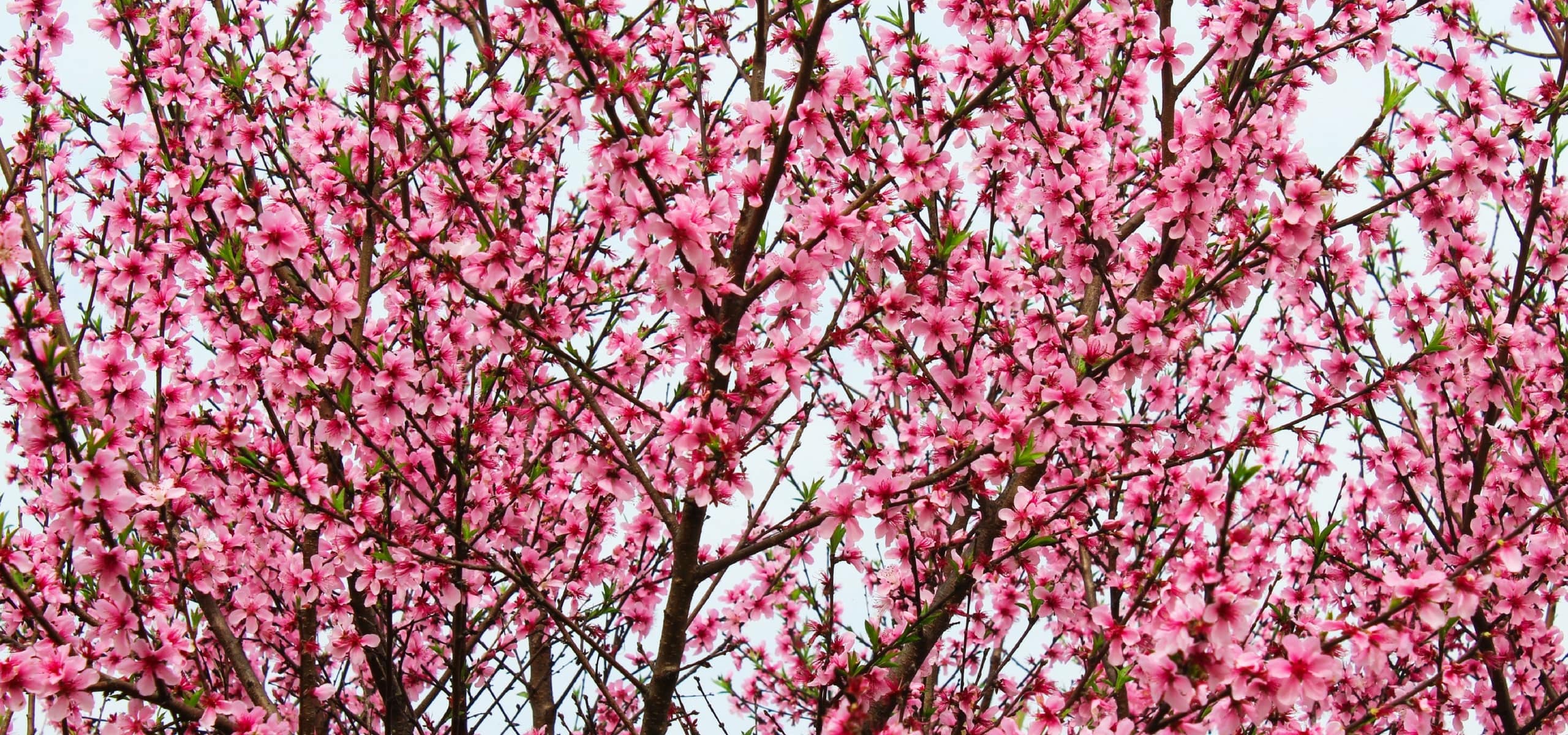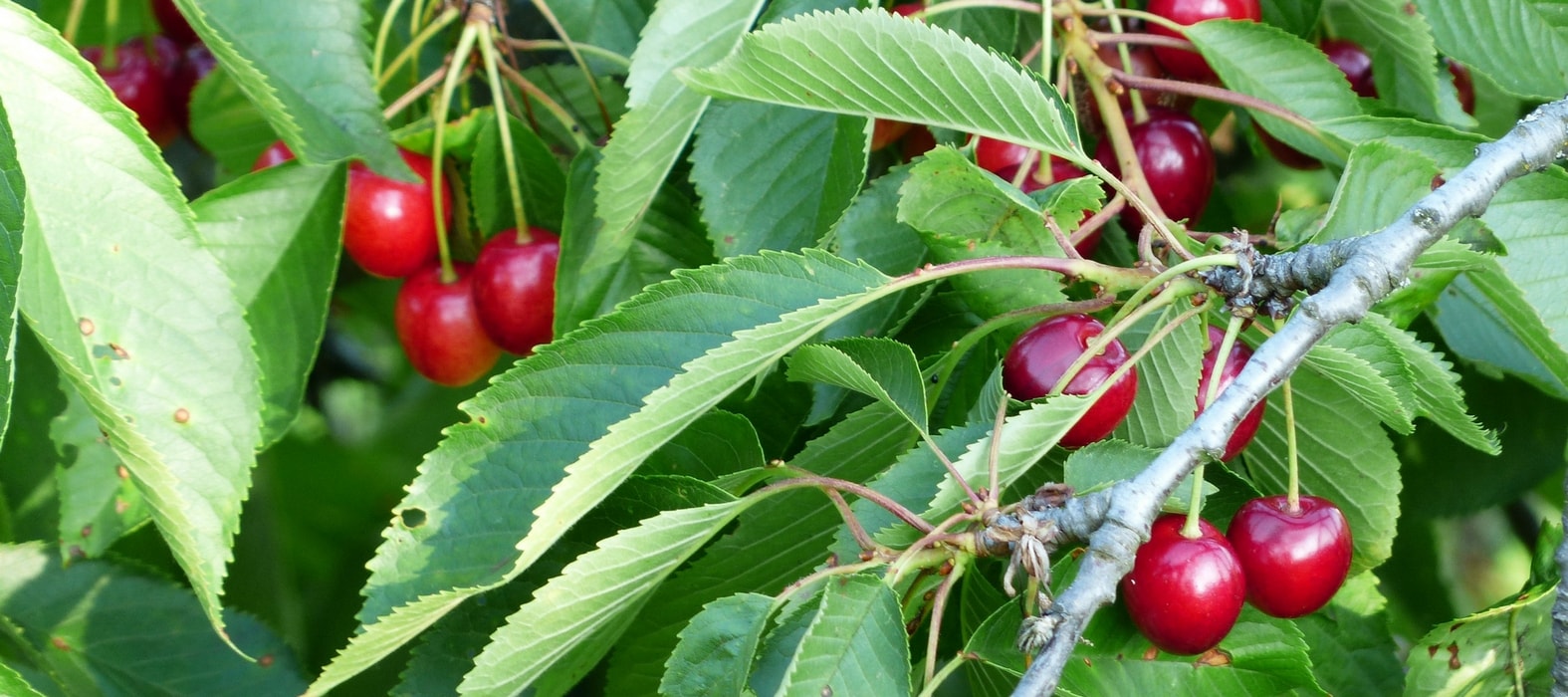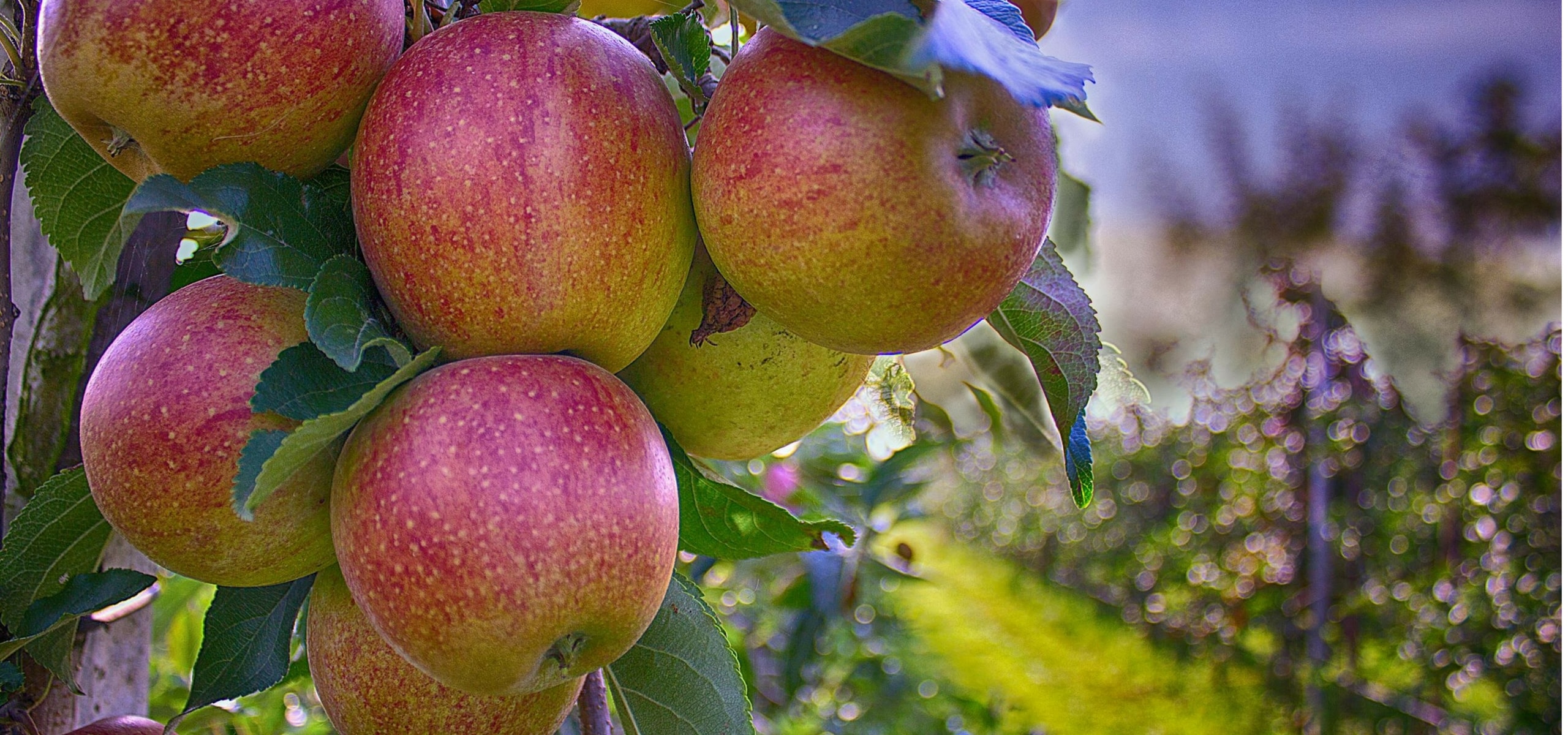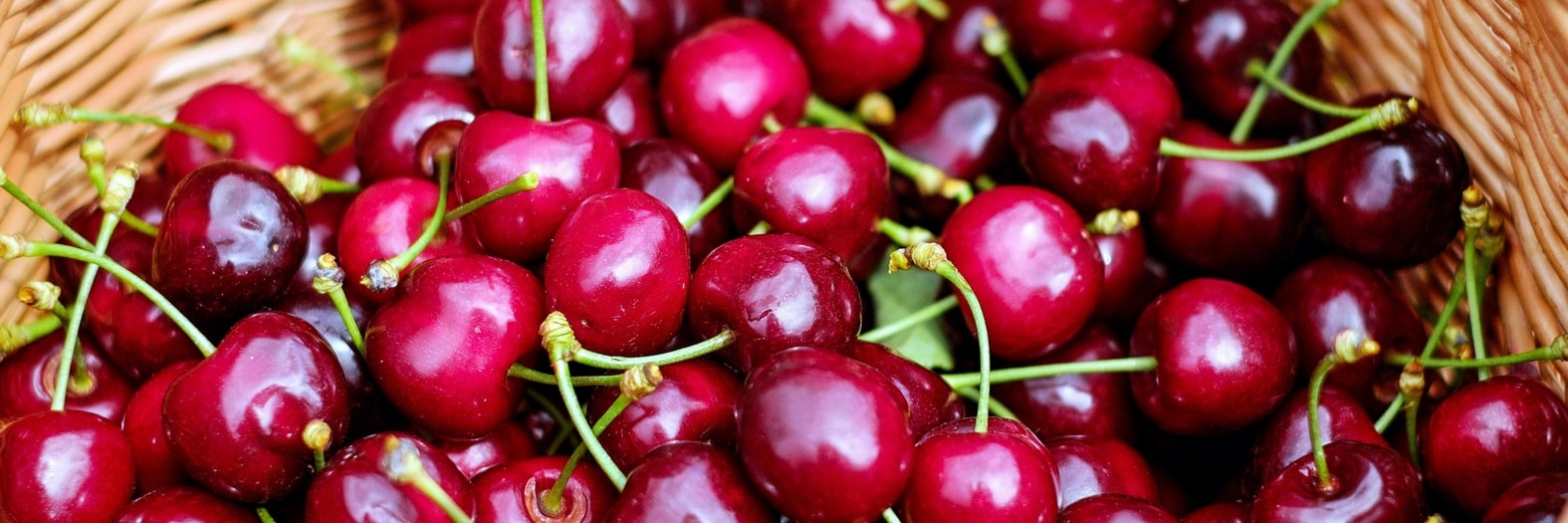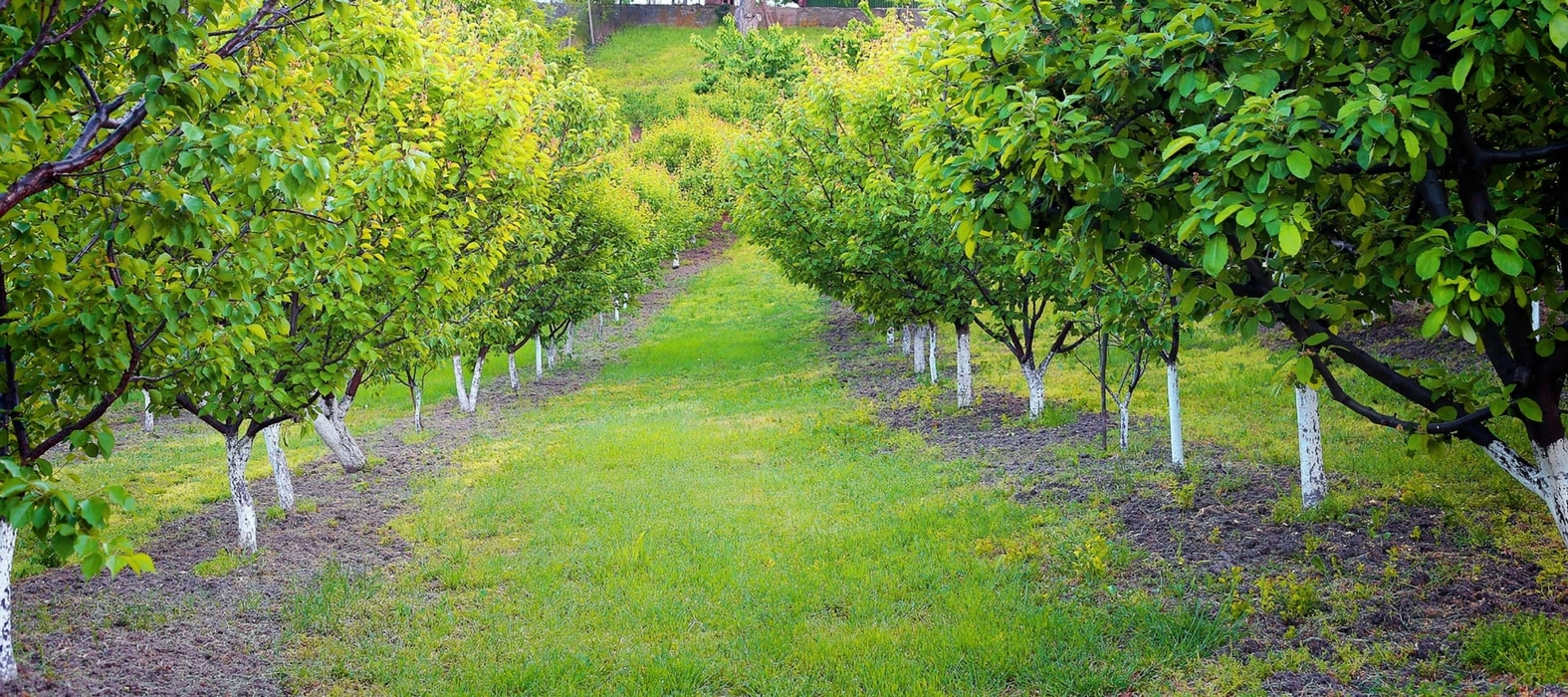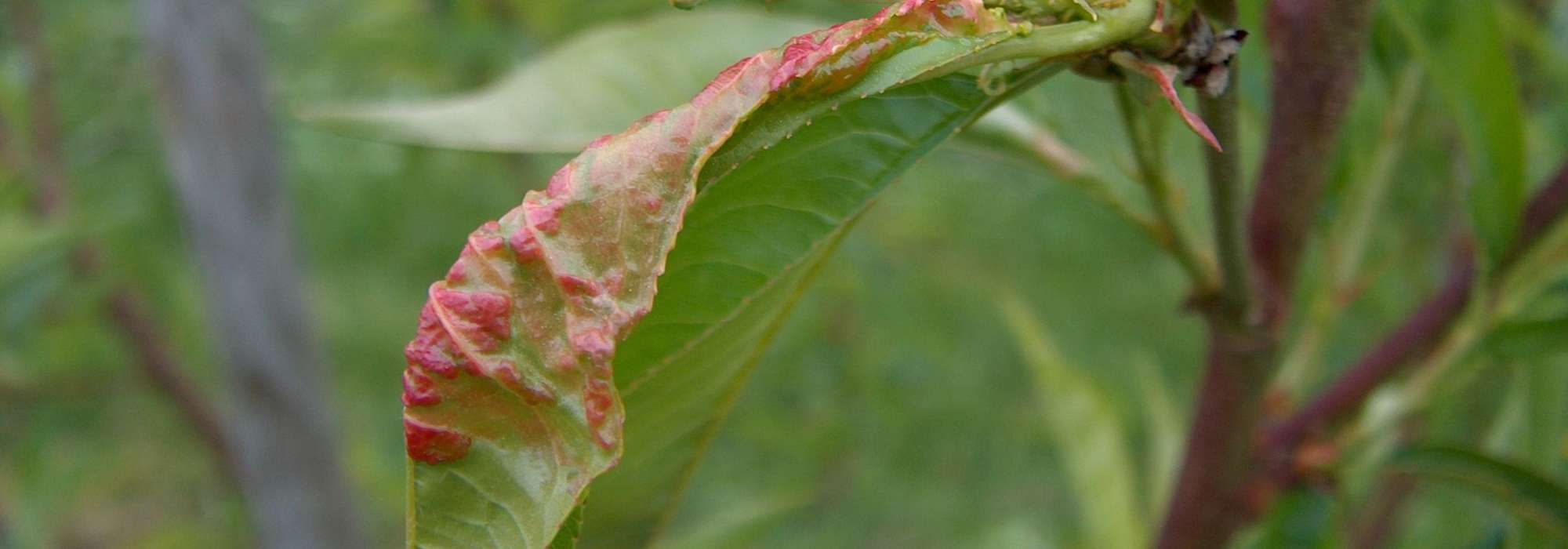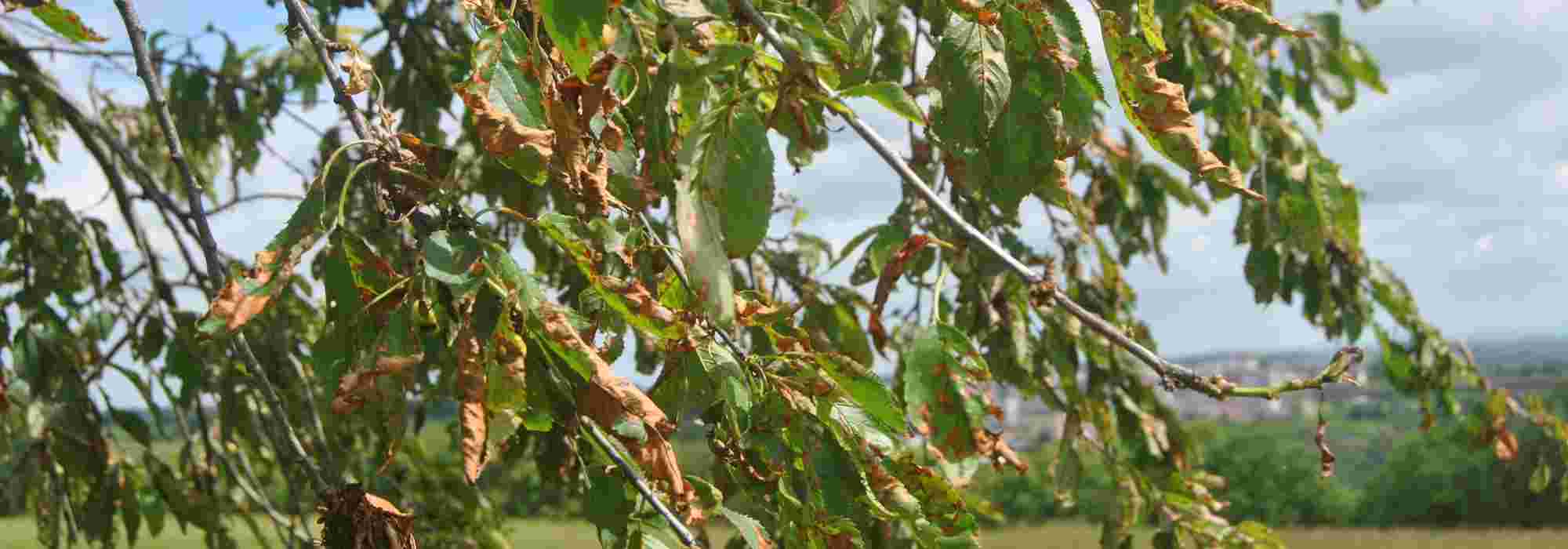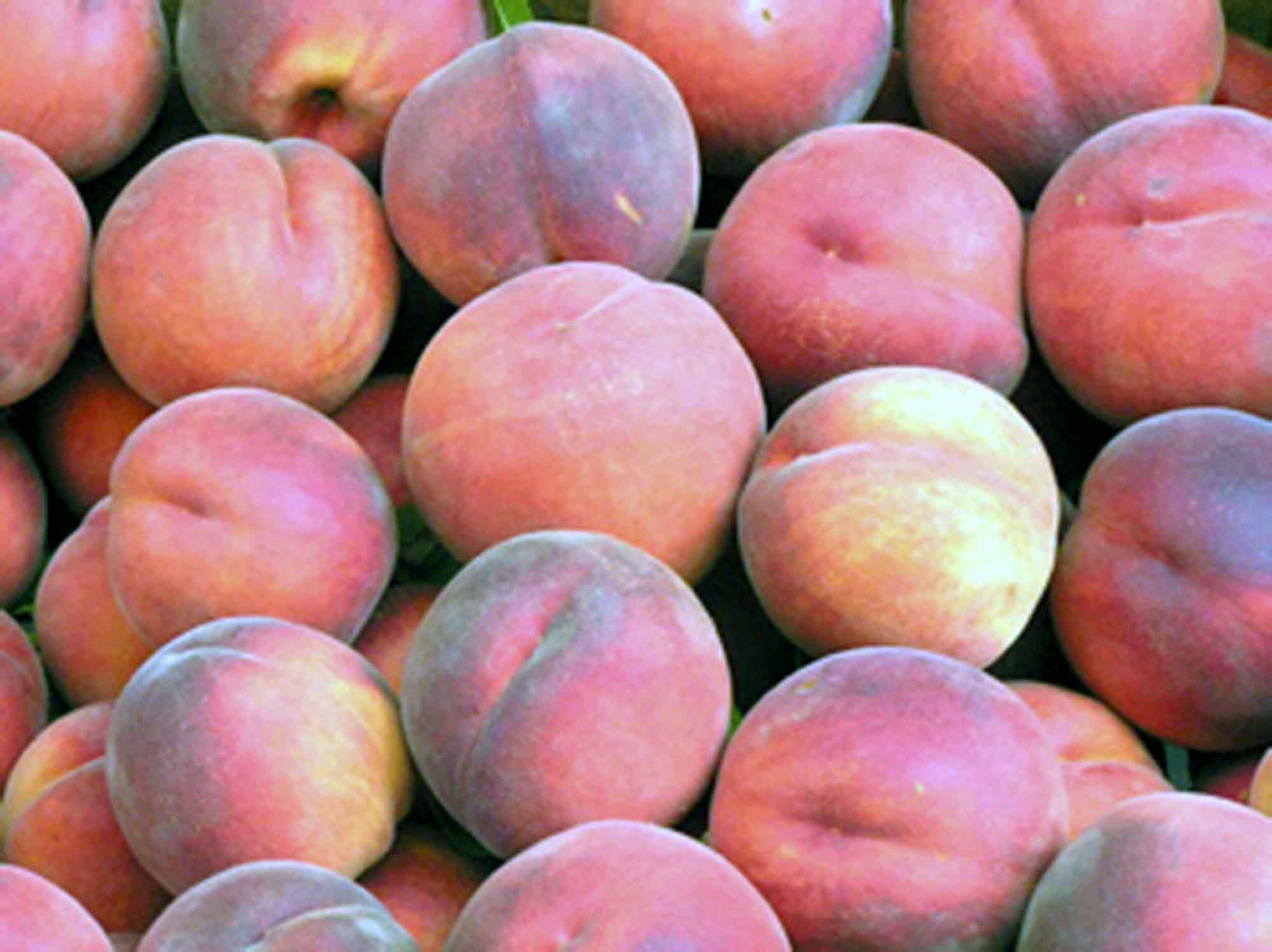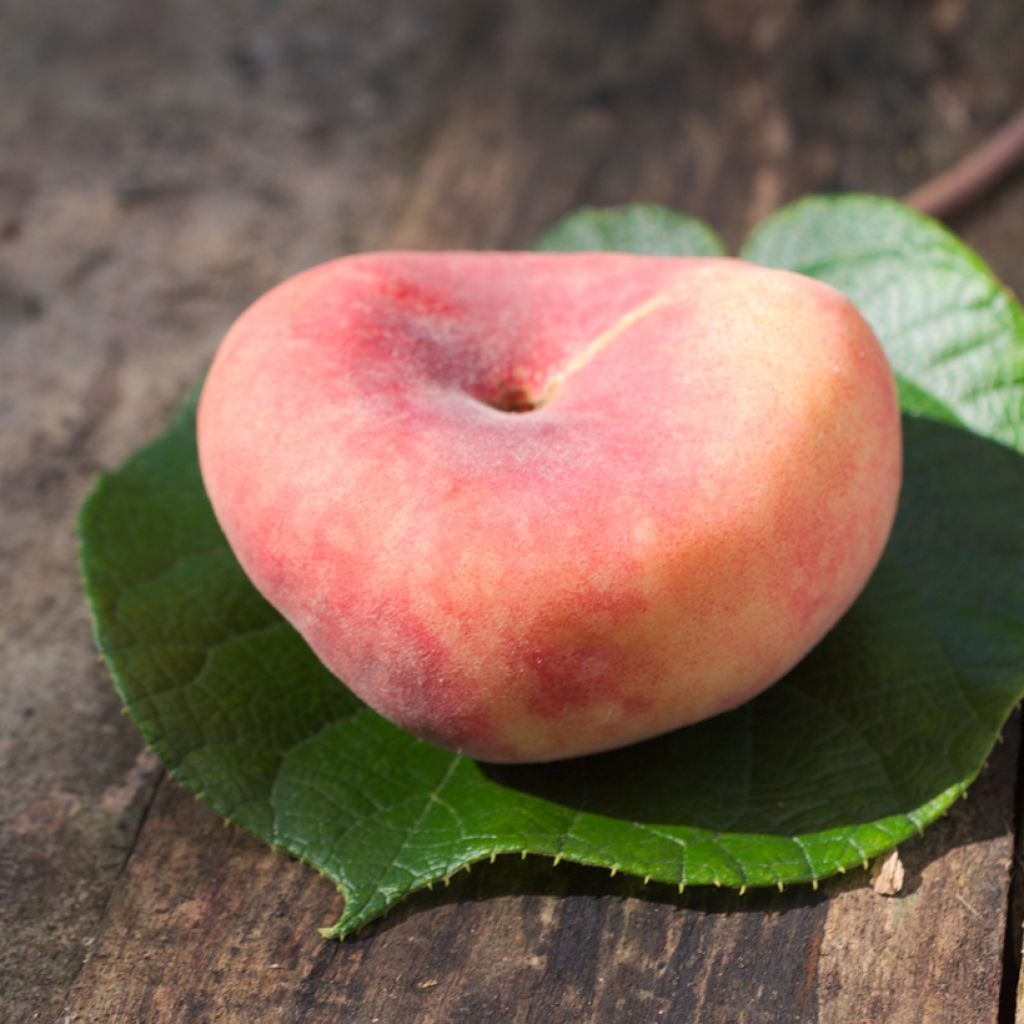

Prunus persica Flatqueen - Flat Peach tree
Prunus persica Flatqueen - Flat Peach tree
Prunus persica 'Flatqueen' Regalcake®34
Flat Peach, Saturn
Special offer!
Receive a €20 voucher for any order over €90 (excluding delivery costs, credit notes, and plastic-free options)!
1- Add your favorite plants to your cart.
2- Once you have reached €90, confirm your order (you can even choose the delivery date!).
3- As soon as your order is shipped, you will receive an email containing your voucher code, valid for 3 months (90 days).
Your voucher is unique and can only be used once, for any order with a minimum value of €20, excluding delivery costs.
Can be combined with other current offers, non-divisible and non-refundable.
Why not try an alternative variety in stock?
View all →This plant carries a 6 months recovery warranty
More information
We guarantee the quality of our plants for a full growing cycle, and will replace at our expense any plant that fails to recover under normal climatic and planting conditions.
Description
Prunus persica Flatqueen is a very vigorous and productive variety of peach. The tree has an upright habit and produces large, flat peaches with a beautiful red colour. Their white flesh is very tasty, being quite sweet. This rather hardy variety can be grown in most regions, although the south remains its preferred zone. However, its semi-late flowering makes it less susceptible than others to late spring frosts.
The Prunus genus, which includes fruit trees and ornamental plants, trees and bushes, is part of the very large family of Rosaceae. It also includes most of our other fruit trees (Apple, Cherry, Apricot...), wild plants from the countryside and forests, and many ornamental plants (Kerria, Photinia, Amelanchier, Roses...). Prunus persica derives its species name from the Greeks who, during Alexander's expedition (4th century BC), discovered it in Persia and named it the Persian apple, malum persicum. They were unaware that this small tree, indeed cultivated for a long time in Persia, actually originated from North China and Mongolia.
Flatqueen® is a French variety developed by A. and L. Maillard, forming a small, upright and spreading tree, reaching heights of 4.50 to 5 m and a spread of 3.5 to 4 m. Its growth is vigorous, with the plant budding relatively early in the season. The flowering, however, is semi-late, occurring in late March and April, which reduces the risk of spring frost affecting the flowers. The variety is self-fertile, which eliminates the need to plant another tree as a pollinator. Furthermore, it exhibits significant floribundity, giving it a slight ornamental quality that is not without interest when the small light pink flowers bloom. In intensive cultivation in professional orchards, Flatqueen requires considerable thinning. Some of the flowers are removed to prevent too many fruits from forming (especially since the setting rate, the transformation of the ovary into fruit, is excellent), in order not to hinder the size of the fruits. Under these conditions, the size is quite significant for this variety, which generally produces fruits weighing 100 to 130 grams. Reaching maturity from mid-July in the southern regions, and in August further north, the peaches are flat, with a thick skin of very uniform red, covering 70 to 90% of the total surface of the fruit. The medium-sized stone is loose, making it easier to consume the fruit. The white flesh is firm enough, with a fine and juicy texture. It is fragrant and sweeter than that of round fruits. The peach can be enjoyed raw, cooked, sweetened, salted, flambéed, frozen or deglazed. It pairs very well with wine and certain meats, such as duck. It features in many recipes, including jams, compotes, and pastries... The fruits of Flatqueen are notably less susceptible to storage diseases.
Highly productive and easy to grow, the Flatqueen Peach is particularly less sensitive to a lack of winter chill, which in some other varieties causes bud drop. It could serve as the starting point for a small orchard where you can combine it with other original fruit trees, such as the Bigarreau Cherry 'Stark Gold'. This self-fertile tree produces golden-yellow cherries that add an ornamental touch. To maintain both ornamental and taste appeal, Diospyros kaki 'Korea' stands out as an obvious choice. Not only will this Persimmon provide you with delicious fruits late in the season, from October, but they are also particularly decorative and visible when the tree has shed its leaves. And before they fall, the leaves will offer a display of flamboyant colours.
Plant habit
Fruit
Flowering
Foliage
Botanical data
Prunus
persica
'Flatqueen' Regalcake®34
Rosaceae
Flat Peach, Saturn
Cultivar or hybrid
Other Peach and Nectarine trees
View all →Planting and care
The Flatqueen® Peach is best planted between October and December. Dig a hole two to three weeks before planting, twice as wide and deep as the pot. On the day itself, place the tree with its pot in a bucket of water to ensure that the entire root ball is moistened by capillarity. Add compost to the bottom of the hole. Position the tree in the hole, filling it in with soil mixed with potting compost. Gently firm the soil around the base of the young plant as you fill, ensuring that the roots are in close contact with the soil. The root ball should be completely covered; then water generously. While it is not particularly demanding regarding soil type, it prefers light and permeable ground. Choose a sunny location, as this variety does not tolerate shade at all. A fertiliser richer in potash than in nitrogen can be applied from May in small, seperate amounts to avoid surges.
Planting period
Intended location
Care
Planting & care advice
This item has not been reviewed yet - be the first to leave a review about it.
Haven't found what you were looking for?
Hardiness is the lowest winter temperature a plant can endure without suffering serious damage or even dying. However, hardiness is affected by location (a sheltered area, such as a patio), protection (winter cover) and soil type (hardiness is improved by well-drained soil).

Photo Sharing Terms & Conditions
In order to encourage gardeners to interact and share their experiences, Promesse de fleurs offers various media enabling content to be uploaded onto its Site - in particular via the ‘Photo sharing’ module.
The User agrees to refrain from:
- Posting any content that is illegal, prejudicial, insulting, racist, inciteful to hatred, revisionist, contrary to public decency, that infringes on privacy or on the privacy rights of third parties, in particular the publicity rights of persons and goods, intellectual property rights, or the right to privacy.
- Submitting content on behalf of a third party;
- Impersonate the identity of a third party and/or publish any personal information about a third party;
In general, the User undertakes to refrain from any unethical behaviour.
All Content (in particular text, comments, files, images, photos, videos, creative works, etc.), which may be subject to property or intellectual property rights, image or other private rights, shall remain the property of the User, subject to the limited rights granted by the terms of the licence granted by Promesse de fleurs as stated below. Users are at liberty to publish or not to publish such Content on the Site, notably via the ‘Photo Sharing’ facility, and accept that this Content shall be made public and freely accessible, notably on the Internet.
Users further acknowledge, undertake to have ,and guarantee that they hold all necessary rights and permissions to publish such material on the Site, in particular with regard to the legislation in force pertaining to any privacy, property, intellectual property, image, or contractual rights, or rights of any other nature. By publishing such Content on the Site, Users acknowledge accepting full liability as publishers of the Content within the meaning of the law, and grant Promesse de fleurs, free of charge, an inclusive, worldwide licence for the said Content for the entire duration of its publication, including all reproduction, representation, up/downloading, displaying, performing, transmission, and storage rights.
Users also grant permission for their name to be linked to the Content and accept that this link may not always be made available.
By engaging in posting material, Users consent to their Content becoming automatically accessible on the Internet, in particular on other sites and/or blogs and/or web pages of the Promesse de fleurs site, including in particular social pages and the Promesse de fleurs catalogue.
Users may secure the removal of entrusted content free of charge by issuing a simple request via our contact form.
The flowering period indicated on our website applies to countries and regions located in USDA zone 8 (France, the United Kingdom, Ireland, the Netherlands, etc.)
It will vary according to where you live:
- In zones 9 to 10 (Italy, Spain, Greece, etc.), flowering will occur about 2 to 4 weeks earlier.
- In zones 6 to 7 (Germany, Poland, Slovenia, and lower mountainous regions), flowering will be delayed by 2 to 3 weeks.
- In zone 5 (Central Europe, Scandinavia), blooming will be delayed by 3 to 5 weeks.
In temperate climates, pruning of spring-flowering shrubs (forsythia, spireas, etc.) should be done just after flowering.
Pruning of summer-flowering shrubs (Indian Lilac, Perovskia, etc.) can be done in winter or spring.
In cold regions as well as with frost-sensitive plants, avoid pruning too early when severe frosts may still occur.
The planting period indicated on our website applies to countries and regions located in USDA zone 8 (France, United Kingdom, Ireland, Netherlands).
It will vary according to where you live:
- In Mediterranean zones (Marseille, Madrid, Milan, etc.), autumn and winter are the best planting periods.
- In continental zones (Strasbourg, Munich, Vienna, etc.), delay planting by 2 to 3 weeks in spring and bring it forward by 2 to 4 weeks in autumn.
- In mountainous regions (the Alps, Pyrenees, Carpathians, etc.), it is best to plant in late spring (May-June) or late summer (August-September).
The harvesting period indicated on our website applies to countries and regions in USDA zone 8 (France, England, Ireland, the Netherlands).
In colder areas (Scandinavia, Poland, Austria...) fruit and vegetable harvests are likely to be delayed by 3-4 weeks.
In warmer areas (Italy, Spain, Greece, etc.), harvesting will probably take place earlier, depending on weather conditions.
The sowing periods indicated on our website apply to countries and regions within USDA Zone 8 (France, UK, Ireland, Netherlands).
In colder areas (Scandinavia, Poland, Austria...), delay any outdoor sowing by 3-4 weeks, or sow under glass.
In warmer climes (Italy, Spain, Greece, etc.), bring outdoor sowing forward by a few weeks.






























